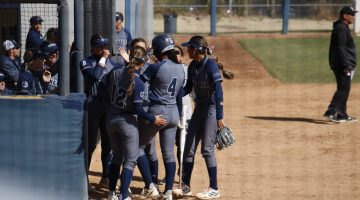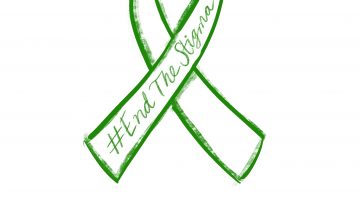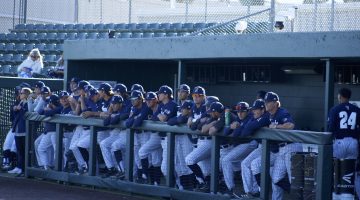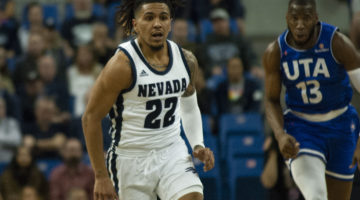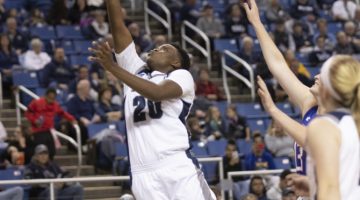It was a balmy Vegas evening at Ed Fountain Park in March of 2010. The street lights were glowing, chants were echoing across the fields and the start of my second youth football season was about to commence. We were playing this team that labeled themselves as the Raiders, and to many people’s dismay every teenager on the field was supposedly the “same age.” Lets just say it appeared as if our two teams were cut from a different size of cloth. But coaches always preached “It’s not about who’s bigger, but about who gets lower when contact erupts.”
Once the regular proceedings finished up we were set to return the kick. I was the lone returner on our 20-yard line. The referee blew the whistle and seconds later the ball was in my grasp, as I hightailed it through the center of the field. Just as I had spun out of one tackle, I got tagged by a 200 plus pound teenager on the other team. I was sitting around 105 pounds at this point in my life. I felt a bit disoriented and confused but I ran into the offensive huddle anyhow to start the first drive. Our quarterback called the play in the huddle and we broke. Before the hit I knew every play in the playbook, where to line up, who to block in any defensive scheme and so forth. After we broke from the huddle I barely knew what position I was and had no idea if I was getting the ball or not. This was my first concussion as an athlete, but not my last.
Tevin Coleman, Nathan Peterman, Todd Davis, Tom Savage and Kendall Lamm. What do all of these players in the National Football League have in common? They’re all sitting on the injury report for their respective teams due to concussion protocol.
Concussions are labeled as a traumatic brain injury that affects your brain function according to mayoclinic.org. Headache, temporary loss of consciousness, confusion, amnesia, dizziness, ringing in the ears and nausea are just a few of the many symptoms that come with concussions. While many of these symptoms are temporary, it is important to note that any type of physical activity should be halted. In Texan QB Tom Savage’s case, this did not happen. Savage took a vicious hit from Elvis Dumervil during the team’s game this past Sunday. Not only did he appear disoriented, but while still on the ground after the play, Savage’s hands appeared to be seizing. Savage was allowed to play the remainder of the game after sitting out for one series.
The problem with allowing Savage in the game after he was clearly suffering from a concussed state, is the extremity of the side effects. Yes, anybody who plays a contact sport is taking a risk by using their bodies as vehicles of violence, but the reason concussion protocol is supposed to be in place is to evaluate the symptoms and issues when they happen to limit the magnitude of negative effects on the brain. If Savage got hit again during that game against the San Francisco 49ers there’s a good chance the consequences would have compounded. In some cases, athletes who have played with concussions end their entire playing careers because the risk of serious brain damage is too high.
All the while during the series of occasions where athletes get these consistent concussions the risk of chronic traumatic encephalopathy rises. Chronic traumatic encephalopathy or CTE for short is a crippling brain disease commonly found in athletes and military veterans who have a history of repetitive brain trauma. CTE begins by creating a protein called Tau which then starts spreading through the brain, killing off brain cells. When CTE was first discovered in 1928 by Dr. Harrison Martland, some boxers described it as “punch drunk syndrome.” But CTE truly came to the forefront of the American society’s attention after Will Smith starred in the movie “Concussion.” In this true story, Smith took on the role of Dr. Bennet Omalu, who found a neurological breakdown in the brain of NFL player Mike Webster during an autopsy in 2005. The worst part about CTE is diagnosis can’t happen until after someone who might have it dies, as the only way to diagnosis it is through brain tissue analysis.
Concussions are inevitable within football and other contact sports, but there are preventive measures that should be taken to keep athletes as healthy as possible for the majority of their careers. The biggest solution to the problem is ensuring all teams run through concussion protocol correctly, and don’t take the athlete’s word every time they say they’re okay after a big hit. In an NPR interview after the death of Junior Seau, Jim Trotter said “this is a guy that had over 1,400 tackles and not once was he ever diagnosed with a concussion.” Seau never told anyone about his concussions he would have during games, because he didn’t want his teammates to feel like they could take a game or a practice off.
Later in the interview, they play a sound bite of Seau where he recognizes what he was doing to himself. “If I could feel some dizziness, I know that guy’s feeling double of what I feel,” Seau said.
After studying Seau’s brain following his suicide in 2012, it was revealed that he suffered from CTE, which has now been found in a number of deceased NFL players. A lot of this could have been avoided had someone pulled Seau aside after a big hit and ran through concussion protocol with him. Granted, that would’ve been a great deal of concussion protocols, but these little precautions could’ve helped Seau remember his name toward the end of his life.
While preventing concussions is easier said than done, it all comes down to educating the coaches, medical staff and most importantly players. Even though concussions are unavoidable, especially in a sport like football, the more knowledge people have on the subject, the more likely they are to come forth when symptoms arise after an intense hit. It also comes down to people not shaming others when concussions happen. Too often do athletes fall into relying on their machismo, before actually evaluating if they’re hurting or not because of the stigma society puts on men.
Opinions expressed in The Nevada Sagebrush are solely those of the author and do not necessarily express the views of The Sagebrush or of its staff.


